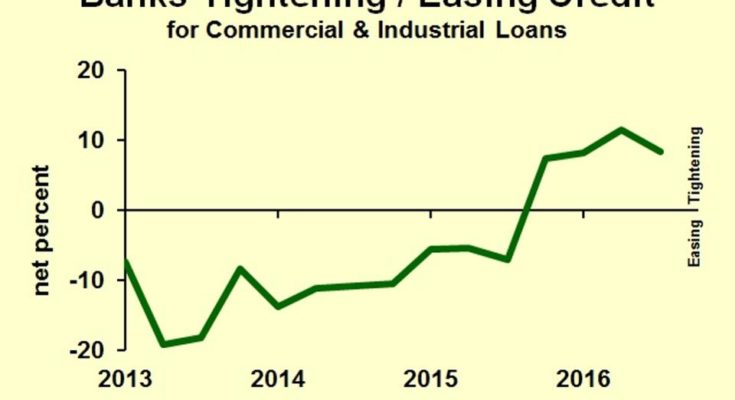Business access to credit is getting harder. The cost of credit for those who can get it is incredibly cheap, but business access to credit is becoming more difficult. Good managers, though, can navigate these troubles with foresight and some time with their bankers or would-be bankers.

Bankers are tightening their credit standards for commercial and industrial loans and had tightened real estate lending standards a year ago before going into neutral recently, according to the Federal Reserve’s Senior Loan Officer Survey. As an example, Bank of America is reported to be more conservative in loan underwriting. There have also been reports of slowing farm credit. And I have been picking up anecdotes from bankers that their appetite for loans has eased.
Why Banks Are Tightening Credit Standards: Better Profits and Regulatory Pressure
Some of this caution is coming internally. Back in 2011, banks eased credit standards to help improve earnings. Earnings had begun to recover as loan charge-offs fell, but banks had relatively few earning assets. The loan-deposit ratio, which had been as high as 94 percent, dropped to just 71 percent in 2011. Investments, such as bonds, paid very low interest rates, so bankers fell over each other trying to grow loan portfolios. Credit standards eased and pricing became much more customer friendly.
Now, loan portfolios have grown faster than the overall economy, 7.9 percent over the past 12 months. Bank earnings have improved, setting an all-time record recently. The return on equity remains below peak ratios, but at 9.4 percent it’s tolerable. Thus the internal caution on new loans.
External forces, including regulatory pressure and reduced competition, are the other factors behind tighter credit. Bank examiners are reviewing loan portfolios with little sympathy for “outside the box†thinking.
On top of that, regulatory compliance costs have reduced the number of banks in the country. The bank compliance function has economies of scale, meaning that small community banks have disproportionately higher expenses. Small banks spend about 8.7 percent of their noninterest expenses on compliance, versus 2.9 percent for the largest banks, according to a report by the Federal Reserve Bank of St. Louis.

